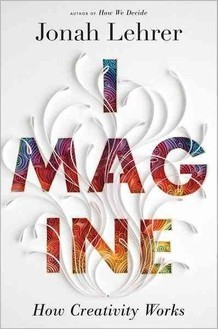Every innovation—whether in business, science, or technology—begins with an idea. And while there are plenty of clichéd buzzwords like “outside the box” and “paradigm shifts” that one could attach to these ideas, science writer Joshua Lehrer sticks the classic standard: Creativity.

The author’s new book, Imagine: How Creativity Works, is an analysis of the neurological processes behind creative thinking with anecdotal evidence taken from some of the most renowned thinkers of our time and beyond. From Steve Jobs to Shakespeare, marketers to managers, Lehrer takes a broad look at what contributes to creativity as a whole.
Across the board, Lehrer finds, creative thinking occurs when one least expects it. The best ideas, he states in an interview with NPR’s Fresh Air, “only arrive after we stop looking at them. If you're an engineer working on a problem and you're stumped by your technical problem, chugging caffeine at your desk and chaining yourself to your computer, you're going to be really frustrated. You're going to waste lots of time. You may look productive, but you're actually wasting time. Instead, at that moment, you should go for a walk. You should play some ping-pong. You should find a way to relax."
In another interview with Robert Siegel, Lehrer explains how activities such as these create alpha waves in the brain’s prefrontal cortex. “Alpha waves are a signal in the brain that's closely correlated with states of relaxation. And what scientists have found is that when people are relaxed, they're much more likely to have those big 'A-ha!' moments, those moments of insight where these seemingly impossible problems get solved.”
In the business world, Lehrer cites the example of 3M capitalizing on this creative incubation by fostering an unrestrained environment for its employees. Engineers at the company are given an hour a day to work on anything they want, even hobbies or personal projects.
Yet this is not to say that the creative process is all fun and games. "It would be wonderful if the recipe for all kinds of creativity was to take showers and play ping-pong and go on vacation and go for walks on the beach,” says Lehrer, “but when you really talk to people in the creative business … if you push them, they say even [an] epiphany had to go through lots of edits on it and iterations and lots of hard work after we have the big idea."
This is an all-too important distinction between creativity and innovation. As Robert F Brands writes in this article, “While creativity is about coming up with the big idea, innovation is about executing the idea and making it a business success.” Brands goes on to give helpful tips on how to efficiently employ creative thought and create the regiment necessary to go from idea to outcome.
All in all, it seems there’s a time and place for everything—a time to unharness yourself and let the ideas arrive, and a time to buckle down and make things happen. The secret is to find the sweet spot in between, and for that balance, your brain will thank you.